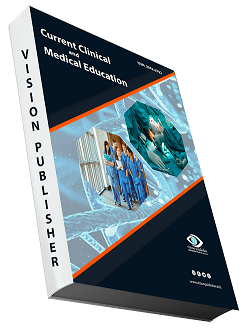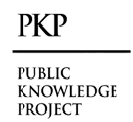Radiobiology of Stereotactic Body Radiation: Therapy/Stereotactic Ablative Radiotherapy, Potential Risk Factor for SBRT [Stereotactic body radiation therapy (SBRT)] Failure and Normal Tissue Response
Keywords:
Radiobiology, Therapy/Stereotactic Ablative Radiotherapy, Risk Factor, Normal Tissue ResponseAbstract
The use of stereotactic ablative radiotherapy (SABR) or stereotactic body radiation therapy (SBRT) is expanding beyond its initial focus on treating tumours in the liver and lungs due to the remarkable success in controlling these malignancies. While technological advancements have been crucial to SBRT's success, biological constraints are currently limiting the use of highly effective SBRT regimens. Although SBRT will keep becoming more popular, there are still some questions about how normal tissues and tumours react to high dose per fraction radiation. This will help us understand how to improve the technology and prevent damage from being caused by too strong SBRT treatments. The models used to estimate biological consequences at high dose per fraction are undergoing a paradigm shift in radiobiology, even if the underlying mechanisms are still not fully understood. Additionally, SBRT may provide scheduling benefits that could be taken advantage of. Due to their serious adverse effects, radioprotective or hypoxic cell cytotoxic medicines that were either discontinued or were not utilised actively should be reevaluated. There is a mechanistic explanation that suggests SBRT is not suitable for tumours with low oxygen levels, therefore this may be particularly true in hypoxia. That idea, though, would be challenged by us.
Downloads
References
Abraham RT (2001) Cell cycle checkpoint signaling through the ATM and ATR kinases. Genes Dev 15:2177–2196
Abraham RT (2004) PI 3-kinase related kinases: ‘big’ players in stress-induced signaling pathways. DNA Repair (Amst) 3:883–887
Begg AC, Sheldon PW, Foster JL (1974) Demonstration of radiosensitization of hypoxic cells in solid tumours by metronidazole. Br J Radiol 47:399–404
Fu XL, Huang H, Bentel G, Clough R, Jirtle RL, Kong FM, Marks LB, Anscher MS (2001) Predicting the risk of symptomatic radiation-induced lung injury using both the physical and biologic parameters V(30) and transforming growth factor beta. Int J Radiat Oncol Biol Phys 50:899–908
Fujino M, Shirato H, Onishi H, Kawamura H, Takayama K, Koto M, Onimaru R, Nagata Y, Hiraoka M (2006) Characteristics of patients who developed radiation pneumonitis requiring steroid therapy after stereotactic irradiation for lung tumors. Cancer J 12:41–46
Garcia-Barros M, Paris F, Cordon-Cardo C, Lyden D, Rafii S, Haimovitz-Friedman A, Fuks Z, Kolesnick R (2003) Tumor response to radiotherapy regulated by endothelial cell apoptosis. Science 300:1155–1159
Grdina DJ, Murley JS, Kataoka Y, Baker KL, Kunnavakkam R, Coleman MC, Spitz DR (2009) Amifostine induces antioxidant enzymatic activities in normal tissues and a transplantable tumor that can affect radiation response. Int J Radiat Oncol Biol Phys 73:886–896
Greijer AE, van der Wall E (2004) The role of hypoxia inducible factor 1 (HIF-1) in hypoxia induced apoptosis. J Clin Pathol 57:1009–1014
Guerrero M, Li XA (2004) Extending the linear-quadratic model for large fraction doses pertinent to stereotactic radiotherapy. Phys Med Biol 49:4825–4835
Hackenbeck T, Knaup KX, Schietke R, Schodel J, Willam C, Wu X, Warnecke C, Eckardt KU, Wiesener MS (2009) HIF1 or HIF-2 induction is sufficient to achieve cell cycle arrest in NIH3T3 mouse fibroblasts independent from hypoxia. Cell Cycle 8:1386–1395
Hammond EM, Giaccia AJ (2005) The role of p53 in hypoxiainduced apoptosis. Biochem Biophys Res Commun 331: 718–725
He J, Luster TA, Thorpe PE (2007) Radiation-enhanced vascular targeting of human lung cancers in mice with a monoclonal antibody that binds anionic phospholipids. Clin Cancer Res 13:5211–5218
Henk JM, Bishop K, Shepherd SF (2003) Treatment of head and neck cancer with CHART and nimorazole: phase II study. Radiother Oncol 66:65–70
Hill RP, Marie-Egyptienne DT, Hedley DW (2009) Cancer stem cells, hypoxia and metastasis. Semin Radiat Oncol 19: 106–111
Johnson N, Li YC, Walton ZE, Cheng KA, Li D (2011) Compromised CDK1 activity sensitizes BRCA-proficient cancers to PARP inhibition. Nat Med 17:875–882
Kang S (2003) Overexpression of extracellular superoxide dismutase protects mice against radiation-induced lung injury. Int J Radiat Biol Oncol Phys 57:1056–1066
Kataoka Y, Basic I, Perrin J, Grdina DJ (1992) Antimutagenic effects of radioprotector WR-2721 against fission-spectrum neurons and 60Co gamma-rays in mice. Int J Radiat Biol 61:387–392
Kataoka Y, Perrin J, Hunter N, Milas L, Grdina DJ (1996) Antimutagenic effects of amifostine: clinical implications. Semin Oncol 23:53–57
Kavanagh BD, Newman F (2008) Toward a unified survival curve: in regard to Park et al. (IntJ Radiat Oncol Biol Phys 2008;70:847–852)
Krueger et al. (Int J Radiat Oncol Biol Phys 2007;69:1262–1271) Int J Radiat Oncol Biol Phys 71:958–959
Kawase T, Kunieda E, Deloar HM, Seki S, Sugawara A, Tsunoo T, Ogawa EN, Ishizaka A, Kameyama K, Takeda A, Kubo A (2007) Experimental stereotactic irradiation of normal rabbit lung: computed tomographic analysis of radiation injury and the histopathological features. Radiat Med 25:453–461
Komaki R, Lee JS, Milas L, Lee HK, Fossella FV, Mooring D, Tucker SL, Cox JD (2004) Effects of amifostine on acute toxicity from concurrent chemotherapy and radiotherapy for inoperable non-small-cell lung cancer: report of a randomized comparative trial. Int J Radiat Oncol Biol Phys 58:1369–1377
Koukourakis MI (2002) Hypofractionated and accelerated radiotherapy with amifostine cytoprotection (HypoARC): a new concept in radiotherapy and encouraging results in breast cancer. Semin Oncol 29:42–46
Koukourakis MI, Patlakas G, Froudarakis ME, Kyrgias G, Skarlatos J, Abatzoglou I, Bougioukas G, Bouros D (2007) Hypofractionated accelerated radiochemotherapy with cytoprotection (Chemo-HypoARC) for inoperable non-small cell lung carcinoma. Anticancer Res 27:3625–3631
Li C, Jackson RM (2002) Reactive species mechanisms of cellular hypoxia-reoxygenation injury. Am J Physiol Cell Physiol 282:C227–C241
Lin A, Lawrence TS (2006) An anaphylactoid reaction from amifostine. Radiother Oncol 79:352
Maj JG, Paris F, Haimovitz-Friedman A, Venkatraman E, Kolesnick R, Fuks Z (2003) Microvascular function regulates intestinal crypt response to radiation. Cancer Res 63:4338–4341
Marks LB (1995) Extrapolating hypofractionated radiation schemes from radiosurgery data: regarding Hall et al., IJROBP 21:819–824; 1991 and Hall and Brenner, IJROBP 25:381–385;
McGarry RC, Papiez L, Williams M, Whitford T, Timmerman RD (2005) Stereotactic body radiation therapy of early-stage non-small-cell lung carcinoma: phase I study. Int J Radiat Oncol Biol Phys 63:1010–1015
McKenna F, Ahmad S (2009) Toward a unified survival curve: in regard to Kavanagh and Newman (Int J Radiat Oncol Biol Phys 2008;71:958–959
Mell LK, Malik R, Komaki R, Movsas B, Swann RS, Langer C, Antonadou D, Koukourakis M, Mundt AJ (2007) Effect of amifostine on response rates in locally advanced non-small-cell lung cancer patients treated on randomized controlled trials: a meta-analysis. Int J Radiat Oncol Biol Phys 68:111–118
Moulder JE, Cohen EP (2007) Future strategies for mitigation and treatment of chronic radiation-induced normal tissue injury. Semin Radiat Oncol 17:141–148
Mueller-Klieser W, Schlenger KH, Walenta S, Gross M, Karbach U, Hoeckel M, Vaupel P (1991) Pathophysiological approaches to identifying tumor hypoxia in patients. Radiother Oncol 20(Suppl 1):21–28
Muniyappa H, Song S, Mathews CK, Das KC (2009) Reactive oxygen species-independent oxidation of thioredoxin in hypoxia: inactivation of ribonucleotide reductase and redoxmediated checkpoint control. J Biol Chem 284:17069–17081
Overgaard J (1994) Clinical evaluation of nitroimidazoles as modifiers of hypoxia in solid tumors. Oncol Res 6:509–518
Overgaard J, Overgaard M, Nielsen OS, Pedersen AK, Timothy AR (1982) A comparative investigation of nimorazole and misonidazole as hypoxic radiosensitizers in a C3H mammary carcinoma in vivo. Br J Cancer 46:904–911.
Puck TT, Marcus PI (1956) Action of X-rays on mammalian cells. J Exp Med 103:653–666
Rades D, Fehlauer F, Bajrovic A, Mahlmann B, Richter E, Alberti W (2004) Serious adverse effects of amifostine during radiotherapy in head and neck cancer patients. Radiother Oncol 70:261–264
Rischin D, Peters L (2005) Tirapazamine, cisplatin, and radiation versus fluorouracil, cisplatin, and radiation in patients with locally advanced head and neck cancer: a randomized phase II trial of the trans-tasman radiation oncology group. J Clin Oncol 23:79–87
Rischin D, Peters LJ, O’Sullivan B, (2010) Tirapazamine, cisplatin, and radiation versus cisplatin and radiation for advanced squamous cell carcinoma of the head and neck: a phase III trial of the trans-tasman radiation oncology group. J Clin Oncol 28:2989–2995
Robbins ME, Diz DI (2006) Pathogenic role of the reninangiotensin system in modulating radiation-induced late effects. Int J Radiat Oncol Biol Phys 64:6–12
Rubin P, Johnston CJ, Williams JP, McDonald S, Finkelstein JN (1995) A perpetual cascade of cytokines postirradiation leads to pulmonary fibrosis. Int J Radiat Oncol Biol Phys 33:99–109
Saha D, Watkins L, Yin Y, Thorpe P, (2010) An orthotopic lung tumor model for image-guided microirradiation in rats. Radiat Res 174:62–71
Sasse AD, Clark LG, Sasse EC, Clark OA (2006) Amifostine reduces side effects and improves complete response rate during radiotherapy: results of a meta-analysis. Int J Radiat Oncol Biol Phys 64:784–791
Semenza GL (2007) Evaluation of HIF-1 inhibitors as anticancer agents. Drug Discov Today 12:853–859
Semenza GL, Shimoda LA, Prabhakar NR (2006) Regulation of gene expression by HIF-1. Novartis Found Symp 272:2–8
Thompson LH, Schild D (2002) Recombinational DNA repair and human disease. Mutat Res 509:49–78
Till JE, Mc CEA (1961) A direct measurement of the radiation sensitivity of normal mouse bone marrow cells. Radiat Res 14:213–222
Timmerman RD, Story M (2006) Stereotactic body radiation therapy: a treatment in need of basic biological research. Cancer J 12:19–20
Timothy AR, Overgaard J, Overgaard M (1984) A phase I clinical study of Nimorazole as a hypoxic radiosensitizer. Int J Radiat Oncol Biol Phys 10:1765–1768
Vujaskovic Z, Anscher MS, Feng QF, Rabbani ZN, Amin K, Samulski TS, Dewhirst MW, Haroon ZA (2001) Radiationinduced hypoxia may perpetuate late normal tissue injury. Int J Radiat Oncol Biol Phys 50:851–855
Wang JZ, Huang Z, Lo SS, Yuh WT, Mayr NA (2010) A generalized linear-quadratic model for radiosurgery, stereotactic body radiation therapy, and high-dose rate brachytherapy. Sci Transl Med 2:39ra48
Weterings E, Chen DJ (2008) The endless tale of nonhomologous end-joining. Cell Res 18:114–124.

Downloads
Published
How to Cite
Issue
Section
License

This work is licensed under a Creative Commons Attribution 4.0 International License.
Current Clinical and Medical Education













